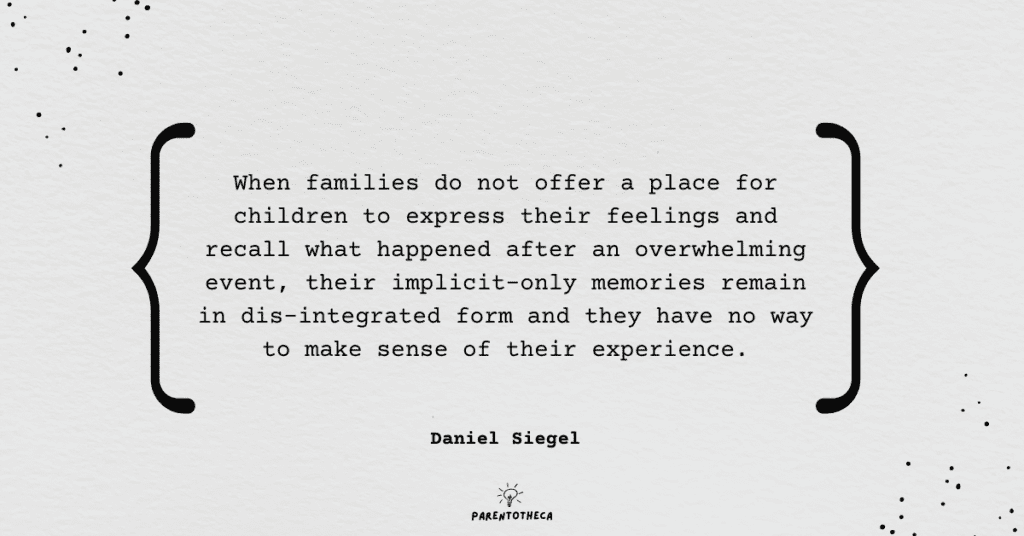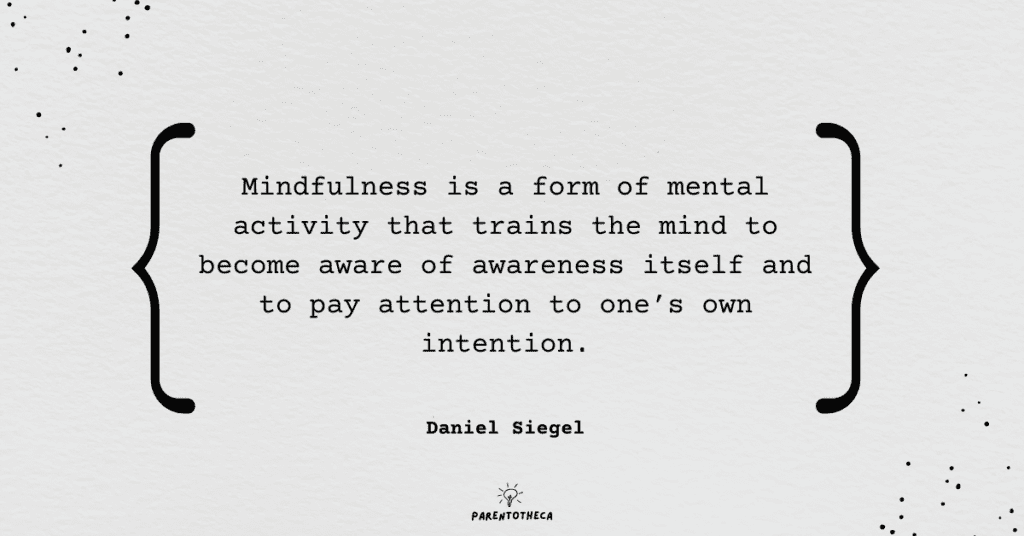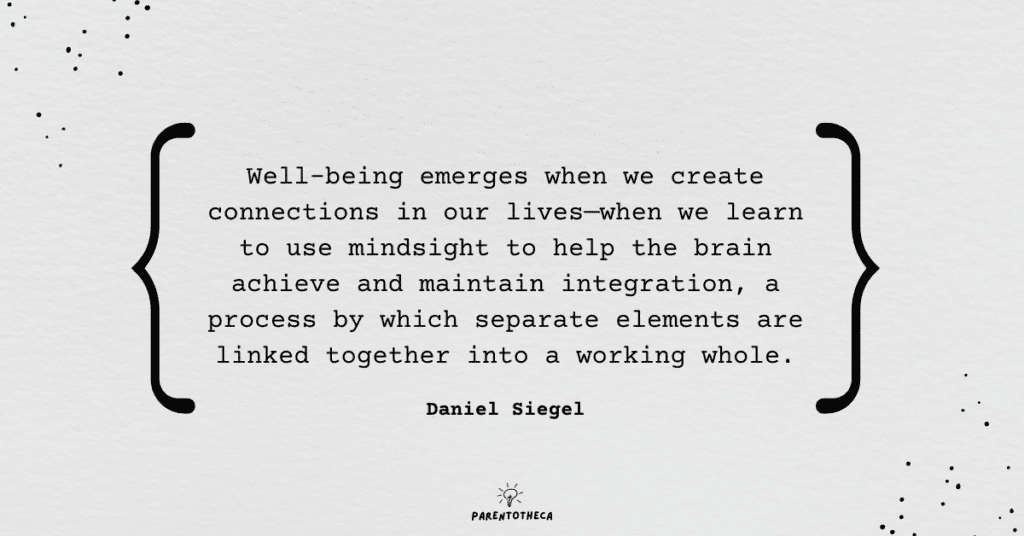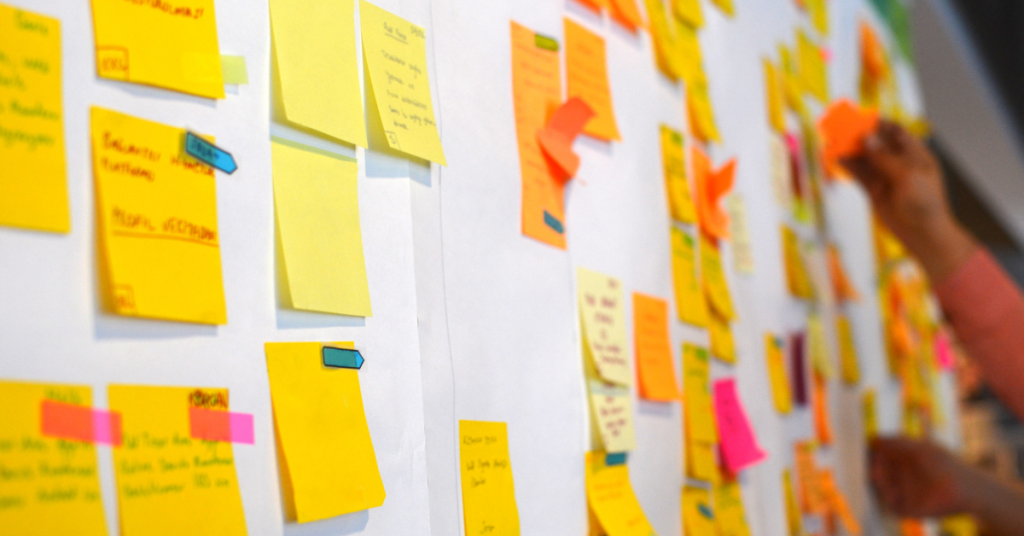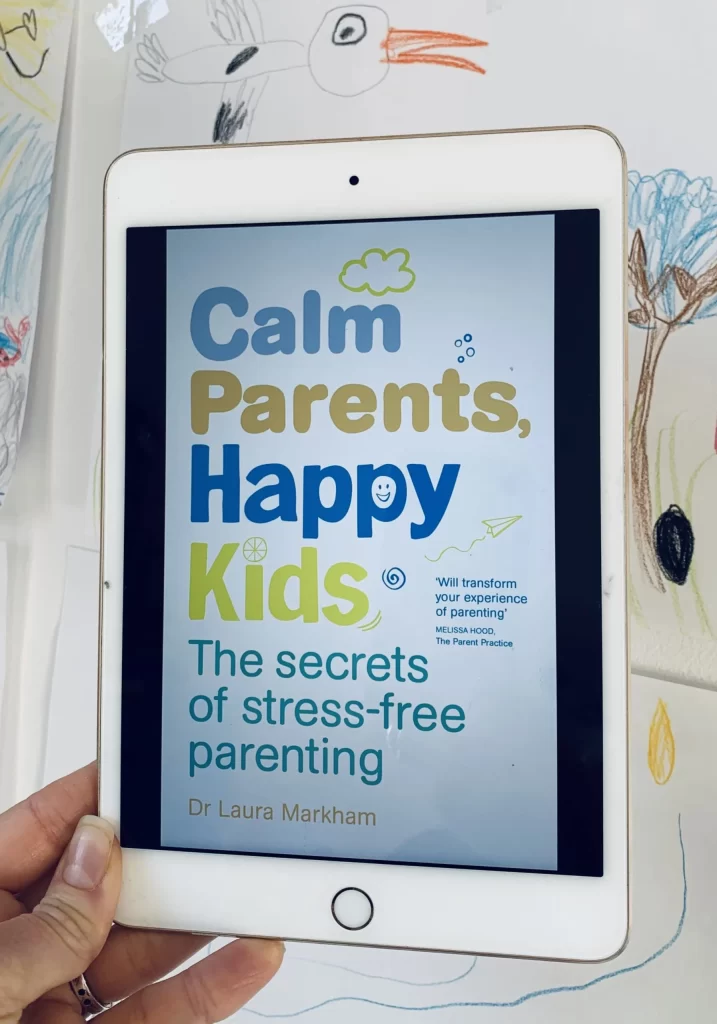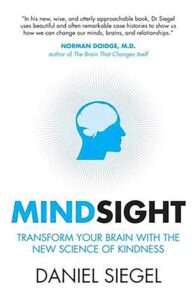 Mindsight
Mindsight
Transform Your Brain with the New Science of Kindness
Daniel Siegel
Oneworld Publications (1 May 2010)
About The Author
Daniel J. Siegel, M.D., received his medical degree from Harvard University and is currently a clinical professor of psychiatry at the UCLA School of Medicine and the founding co-director of the Mindful Awareness Research Center at UCLA. An educator, he is a Distinguished Fellow of the American Psychiatric Association and recipient of several honorary fellowships. The executive director of the Mindsight Institute, the medical director of the LifeSpan Learning Institute and on the advisory board of the Blue School in New York City, which has built its curriculum around Siegel’s Mindsight approach. Dr Siegel is also a pioneer in the field called Interpersonal Neurobiology. His psychotherapy practice includes children, adolescents, adults, couples, and families.
About The Book:
“Within each of us there is an internal mental world—what I have come to think of as the sea inside—that is a wonderfully rich place, filled with thoughts and feelings, memories and dreams, hopes and wishes. Of course it can also be a turbulent place, where we experience the dark side of all those wonderful feelings and thoughts—fears, sorrows, dreads, regrets, nightmares. When this inner sea seems to crash in on us, threatening to drag us down below to the dark depths, it can make us feel as if we are drowning. Who among us has not at one time or another felt overwhelmed by the sensations from within our own minds? Sometimes these feelings are just a passing thing—a bad day at work, a fight with someone we love, an attack of nerves about a test we have to take or a presentation we have to give, or just an inexplicable case of the blues for a day or two. But sometimes they seem to be something much more intractable, so much part of the very essence of who we are that it may not even occur to us that we can change them. This is where the skill that I have called “mindsight” comes in, for mindsight, once mastered, is a truly transformational tool. Mindsight has the potential to free us from patterns of mind that are getting in the way of living our lives to the fullest.”
Dan Siegel is hands down one of my favourite psychotherapists and neuroscientists. His parenting books, co-authored with Tina Payne Bryson, completely transformed my life and played a pivotal role in helping me become a better parent (definitely check out our notes on The Whole-Brain Child, The Yes-Brain Child, and The Power of Showing Up).
Mindsight beautifully pulls together all of Dr. Siegel’s key concepts in a remarkably cohesive manner. With solid science and stories from his own experiences, the book shows how, by following certain steps, almost anyone can learn to focus their attention on the inner world of the mind. And guess what? It can actually rewire and transform our brains and, subsequently, our lives.
After reading Mindsight, I can totally understand why Dr Siegel is so committed to helping parents and caregivers worldwide foster mindsight from early childhood.
This book goes deep, prompting plenty of self-reflection. If you’re on a mission to live life to the fullest, Mindsight stands as an excellent stepping stone for your personal growth. It is full of insights, and I’m looking forward to sharing a few of my favourites.
Let’s dive in.
Key Insights:
Mindsight – Our Seventh Sense
“Our first five senses allow us to perceive the outside world—to hear a bird’s song or a snake’s warning rattle, to make our way down a busy street or smell the warming earth of spring. What has been called our sixth sense allows us to perceive our internal bodily states—the quickly beating heart that signals fear or excitement, the sensation of butterflies in our stomach, Our first five senses allow us to perceive the outside world—to hear a bird’s song or a snake’s warning rattle, to make our way down a busy street or smell the warming earth of spring. What has been called our sixth sense allows us to perceive our internal bodily states—the quickly beating heart that signals fear or excitement, the sensation of butterflies in our stomach, the pain that demands our attention. Mindsight, our ability to look within and perceive the mind, to reflect on our experience, is every bit as essential to our well-being. Mindsight is our seventh sense. As I hope to show you in this book, this essential skill can help us build social and emotional brainpower, move our lives from disorder to well-being, and create satisfying relationships filled with connection and compassion.”
Alright, so let’s break down what is mindsight and what all the buzz is about.
Mindsight, in its essence, is a kind of focused attention that allows us to see and shape our minds. It helps us to look deep inside and become aware of our mental processes without being swept away by them. It’s the switch that turns off our autopilot, steering us away from those reactive emotional loops and helping us build emotional agility. The beauty of mindsight lies in its ability to unravel the mystery of who we are and how we can craft a meaningful life. Plus, it does wonders for our brain and body, nudging them towards homeostasis and better health. At the same time, cultivating mindsight sets the stage for better relationships, whether it’s with our kids, partners, friends, or even ourselves.
In a nutshell, mindsight is the key to our well-being.
Dan’s TED Talk, “The Power of Mindsight,” breaks it down even further. I highly recommend giving it a watch:
Now, if you’re keen on getting hands-on with mindsight, check out The Wheel of Awareness practice. We touched upon it in The Whole Brain Child notes, but you can also find a guided practice on Dan’s website here. Personally, I love it, and it’s been a game-changer for helping my older son deal with his anxieties and worries.
The Triangle of Well-being: Mind, Brain and Relationships
“What mindsight does is enable us to sense and shape energy and information flow. That’s the basic definition, the deeper truth, the fuller picture. With mindsight we gain perception and knowledge of the regulation (mind), sharing (relationships), and mediating neural mechanisms (brain) at the heart of our lives. “Our lives” means yours and mine. Mindsight takes away the superficial boundaries that separate us and enables us to see that we are each part of an interconnected flow, a wider whole. By viewing mind, brain, and relationships as fundamentally three dimensions of one reality—of aspects of energy and information flow—we see our human experience with truly new eyes.”
Let’s break it down further.
Big idea number one: Your mind involves a flow of energy and information. Energy is the power to do stuff – physically or mentally. Information is “anything that symbolizes something other than itself” – like the words you’re reading or hearing right now. Our thoughts, feelings, memories, beliefs – they’re all part of this flow. Mindsight gives us the ability to tweak these patterns, changing our mind, brain, and relationships. Which brings us to…
Big idea number two: Mind, Brain, and Relationship are all part of one whole open system that is continually responding to new experiences. Dan calls it The Triangle of Well-Being. You can check out his detailed explanation in this video:
Big idea number three: our minds are interconnected. Both “me” and “we” shape our sense of self. Connecting with others is a primal need. Cultivating mindsight lets us build better relationships with those around us.
Mindsight helps us not only to see our mind but also understand others. And that’s how we can authentically connect.
The Tripod of Reflection: Openness, Observation and Objectivity
“To regain control of the mind after we have lost it, we need the power of reflection that is at the heart of mindsight. Mindsight emerges as our communication—with others and with ourselves—helps us reflect on who we really are and what is going on inside us. Here I’ll explore three very specific components of reflection that are at the heart of our mindsight abilities: openness, observation, and objectivity.
Openness implies that we are receptive to whatever comes to our awareness and don’t cling to preconceived ideas about how things “should” be. We let go of expectations and receive things as they are, rather than trying to make them how we want them to be. Openness enables us to sense things clearly. It gives us the power to recognize restrictive judgments and release our minds from their grip.
Observation is the ability to perceive the self even as we are experiencing an event. It places us in a larger frame of reference and broadens our perspective moment to moment. Put another way, self-observation allows us to see the fuller context in which we are living. Observation offers a powerful way to disengage from automatic behaviors and habitual responses; we can sense our role in these patterns and begin to find ways to alter them.
Objectivity permits us to have a thought or feeling and not become swept away by it. It recruits the ability of the mind to moment. Put another way, self-observation allows us to see the fuller context in which we are living. Observation offers a powerful way to disengage from automatic behaviors and habitual responses; we can sense our role in these patterns and begin to find ways to alter them. Objectivity permits us to have a thought or feeling and not become swept away by it. It recruits the ability of the mind to be aware that its present activities—our thoughts, feelings, memories, beliefs, and intentions—are temporary and, moreover, that they are not the totality of who we are. They are not our identity. Objectivity allows us to develop what is sometimes called discernment.”
Reflection is our superpower. It’s the key to regaining control of our mind when we lose it, unlocking emotional agility and emotional intelligence.
Dr. Siegel paints a vivid picture of this concept using the tripod of reflection, where openness, observation, and objectivity are its sturdy legs. If any of these is missing, your mind can become foggy, leading you to follow impulses and autopilot mindlessly.
Mastering the art of reflection empowers you to understand yourself better, make wiser decisions, and navigate life’s twists and turns with a clearer mind. Without reflection, you’re just drifting. But with it, you’re in the driver’s seat, steering toward a more mindful and intentional life.
Neural Integration and FACES flow
“Now the qualities of an integrated flow spelled a universally memorable word: FACES, for Flexible, Adaptive, Coherent, Energized, and Stable. We can say that any healthy complex system has a FACES flow. In other words, when the self-organizational movement of the system is maximizing complexity, it attains a harmonious flow that is at once flexible, adaptive, coherent, energized, and stable. This is the feeling you get from our amazing and graceful complexity choir. I like to imagine the FACES flow as a river. The central channel of the river is the ever-changing flow of integration and harmony. One boundary of this flow is chaos. The other boundary is rigidity. These are the two banks of the river of integration. Sometimes we move towards the bank of rigidity—we feel stuck. Other days we lean towards chaos—life feels unpredictable and out of control. But in general, when we are well and at ease, we move along this winding path of harmony, the integrated flow of a flexible system. We sense the familiar but are not trapped by it. We live at the threshold of the unknown and have the courage to move into new and uncharted waters. This is living a life as it unfolds, moment by moment, in a flowing journey between rigidity and chaos. This is the FACES flow.”
I absolutely love Dr. Siegel’s river metaphor, helping us envision the seamless flow of integration. It also resonates with Jordan Peterson’s chaos and order concept (check out our notes on 12 Rules for Life).
Now, when our system (brain, mind and relationships) is integrated on various levels, we are in the well-being zone. On the flip side, chaos or rigidity signals blocked integration (a powerful reminder that behaviours have meaning).
Dr. Siegel guides us toward well-being by identifying elements that lack differentiation and connection. He introduces us to the eight domains of integration, the “keys to personal transformation and well-being”:
- The integration of consciousness – Experience of awareness, cultivated brilliantly with the Wheel of Awareness.
- Horizontal integration – integration of the left and right parts of the brain.
- Vertical integration – integration of the body, brainstem, limbic areas, and cortex.
- Memory integration – integration of implicit and explicit memory.
- Narrative integration – integration of “our left hemisphere’s narrator function with the autobiographical memory storage of our right hemisphere”. Dr Siegel covers it a lot in The Power of Showing Up (check out our notes) as a powerful tool for healing “a cross-generational legacy of pain and insecure attachment.”
- State Integration – integration of the “distinct states of being that embody our fundamental drives and needs: closeness and solitude, autonomy and independence, caregiving and mastery, among others.”
- Interpersonal integration – integration of self with others.
- Temporal Integration – integration in the context of existential doubts associated with uncertainty, impermanence, and mortality.
In the book, Dr Siegel shares inspiring stories of how he’s helped patients move towards integration and well-being – definitely grab the book for more.
And here’s the juicy part – childhood is when most integration blocks form, significantly impacting well-being later in life. No wonder Dr. Siegel is so passionate about teaching parents and caregivers to help children develop a healthy integration flow and mindsight to regain balance when faced with chaos or rigidity.
And guess what Dr. Siegel champions as the ace tool for promoting neural integration? Mindfulness meditation!
And once again, I can’t recommend Dr. Siegel’s parenting books enough! Check out our notes on The Whole-Brain Child, The Yes Brain Child, and The Power of Showing Up.
Mind and Body Connection
“When we block our awareness of feelings, they continue to affect us anyway. Research has shown repeatedly that even without conscious awareness, neural input from the internal world of body and emotion influences our reasoning and our decision making. Even facial expressions we’re not aware of, even changes in heart rhythm we may not notice, directly affect how we feel and so how we perceive the world. In other words, you can run but you cannot hide. Colleagues of mine at UCLA have recently demonstrated that the pain of social rejection is mediated in an area of the middle prefrontal cortex that also registers physical pain from a bodily injury.”
Research shows that our mind and body are closely linked. When dealing with health problems, it’s essential to take a closer look and reflect on what might be causing our pain.
A few years ago, I had a meeting with a heart doctor in a big London hospital. I kept fainting, and despite looking physically fine, the doctors couldn’t figure out why. After all the tests, the doctor surprised me by prescribing… meditation! He claimed that a straightforward mindfulness practice could help about 90% of his patients. Whether it was a mind trick or the real deal, I can’t be sure, but once I started meditating, all my health issues disappeared.
Action Steps For You:
- Practice Mindfulness: Start with regular mindfulness exercises like deep breathing or the “Wheel of Awareness.” Dedicate a few minutes each day to foster awareness and presence.
- Explore Integration Domains: Reflect on Dr. Siegel’s eight domains of integration. Choose one or two domains where you feel the integration may be lacking and work on enhancing integration in those areas.
- Reflect on Personal Narratives: Take time to reflect on your life story and recurring patterns (reflecting on your attachment style might be a good starting point). Identify and reframe narratives that may contribute to negative feelings, fostering a more positive self-view.
Quotes From The Book


